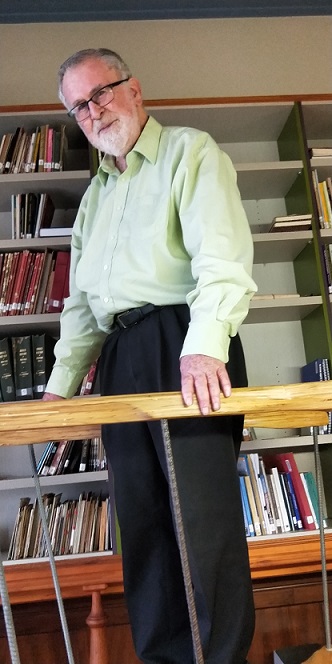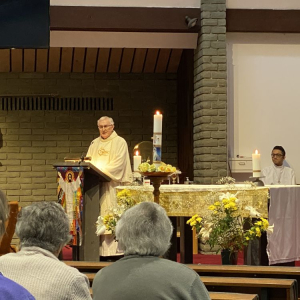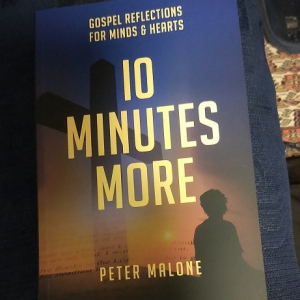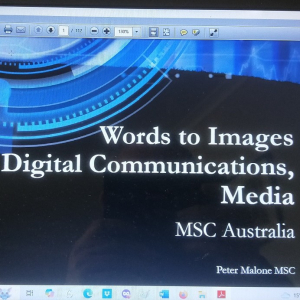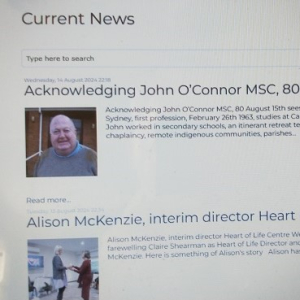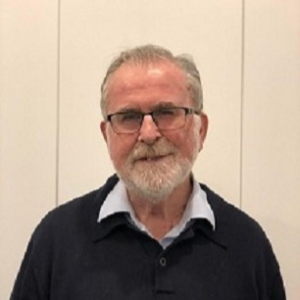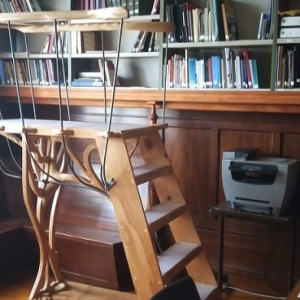Displaying items by tag: Peter Malone MSC
Mala Influencia/ Bad Influence
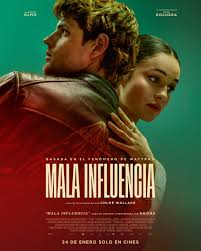
MALA INFLUENCIA/ BAD INFLUENCE
Spain, 2025, 104 minutes, Colour.
Alberto Olmo, Elea Rochera, Enriqie Arce, Mirela Balic, Sara Arino,Farid Bechara, Fernando Fraga,.
Directed by Chloe Wallace.
At the centre of Bad Influence teenagers, central character girl, Rhys, still at school, studying ballet, seemingly victim of a stalker and attempts to injure her. In the background are her best friends and various people from school, including a rather demanding boyfriend.
In fact, this film is based on an online novel on Wattpad which, according to publicity, has been read online by 51 million readers. Which means then that the film is geared towards this audience and readers.
Reese’s wealthy, a businessman father, absent mother. She is studying ballet and has a talent. Her father, concerned, organises a bodyguard for her, Ross, four years older. He has a background of juvenile delinquency, in an extra two and, friendly with two other rather forceful characters, Payton and Diego, who are working to get one of their friends out of detention and to set him up comfortably with them.
The father has forbidden the bodyguard to have any emotional relationship with his daughter – but, with the progress of the film, with various emotional ups and downs, this is, of course, what happens. There is the jealousy of the now ex-boyfriend. And Payton and Diego are particularly free in this style, their behaviour at student’s party, getting as much food as they can, especially for Payton, and Diego attracting Reese’s girlfriend.
The film builds up some kind of suspense, the mystery of the stalker, the ambiguous behaviour of the father, his business deals and absences, and the revelation that he knew a Ross when he was young and there is some kind of connection.
Not a film of great interest to an adult audience but opening up this kind of melodrama to the teen audience.
Made in England: The Films of Michael Powell and Emeric Pressburger
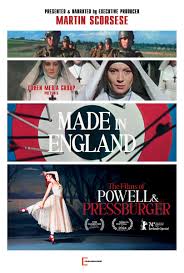
MADE IN ENGLAND: THE FILMS OF POWELL AND PRESSBURGER
UK/US, 2024, 132 minutes, Colour.
Martin Scorsese.
Directed by David Hinton.
This is a filmed masterclass with Martin Scorsese, talking to camera, but speaking earnestly and always interestingly to the cinema audience.
From his childhood, seeing The Red Shoes, he has been enthusiastic for the films of Michael Powell and Emeric Pressburger. In his early years of making films, he corresponded with Michael Powell. And, Powell, in his retirement, moved to Los Angeles, a strong friendship with Scorsese over many years. Scorsese had studied with Thelma Schoenmaker who married Powell and who has been the editor of Scorsese’s films for over 40 years.
This is the background for Scorsese’s enthusiasm.
Scorsese makes his audience comfortable with scenes from the films, with photos and clips of the two directors, an enjoyable introduction and he moves to a biography of Powell, very British in his way. Then a biography of Pressburger, born in Hungary, working in Germany, then in France and moving to England, learning the language, becoming a master of the language.
There is an overview of Powell’s early career, working in studios in Nice in the 1930s with American director, the imaginative Rex Ingram. Then a number of small features in England. His first major film was set in Scotland, Edge of the World. And, as with all the films that follow, extensive clips from the films and analysis by Scorsese himself, of technique and style, of themes, of issues, artistic, political…
The first collaboration between Powell and Pressburger was in 1939, the year of the outbreak of World War II, a spy film, The Spy in Black. During the 40s, they had an extraordinary career. Pressburger was the writer, coproducing with Powell as director. There were not only friends, but there was of professional love and friendship between them, never an ill word against each other, even when there was a parting of the ways in the late 1950s. There are many interviews with each of the throughout the film and quite a number of interviews, judging by their ages, and appearance, over several decades. And, finally an award, presented by Deborah Kerr, star of two of the most significant films.
World War II provided a strong occasion for their filmmaking and insights, beginning with The 49th Parallel, Nazi soldiers stranded in Canada, going to the German community, rejected by them. Then there was the film, disliked by Churchill, the Life and Death of Colonel Blimp, an overview of Britain at war in three stories, from the early 20th century, World War I, World War II, featuring Roger Livesy in the central role and introducing Deborah Carr in three roles, filmed when she was in her early 20s. Something of a sardonic look at changing British military attitudes and behaviour.
This was followed by a black-and-white production, A Canterbury Tale, Chaucer’s framework, again World War II. And, fostering relationship with the United States, the extraordinary fantasy, in black and white for Heaven, in colour for Earth, A Matter of Life and Death.
With the end of the war there was the light touch with the romance, I Know Where I’m Going. But a key film in this post war period, set in India but filmed in England with back drops and sets, Black Narcissus, a story of Anglican nuns from a novel by Rumer Goden. Exotic, intriguing, colourful, highly imaginative. This was followed by The Red Shoes, ballerina, Moira Shearer, persuaded to dance and at the central role, the Hans Anderson fable, the dancer, her controller – featuring Anton Walbrook, in so many of Powell and Pressburger films, and a tour de force by Australia’s Robert Helpmann.
The film traces the couples dealing with the Rank Studios, with Alexander Korda, the very small budget The Small Back Room, commercial failure in his time but interesting in retrospect. Then attempted collaboration with Sam Goldwyn, the reworking of the Scarlet Pimpernel, The Elusive Pimpernel and with David Selznick for his wife, Jennifer Jones, Gone to Earth, which was recut by Selznick and released as Wild Heart.
The 50s were difficult for the couple, the American influence, the budget for a dramatisation in dance of Tales of Hoffman, the musical of Offenbach, highly imaginative – then also cut but restored in later decades. A follow-up was Oh.. Rosalinda, based on the Strauss light operetta, Die Fledermaus, The Bat, N acquired taste for most audiences, THE popular audience put off by the music, the singing, the farcical story, the highly stylised performances. One of the reasons for seeing it is the British cast, especially Michael Redgrave singing, dancing, high kicks and leaping click of heels, a performance unlike any of his others.
Some war films in the mid-1950s, The Battle of the River Plate and Ill Met by Moonlight.
The climax of Powell’s career was the psychological/horror drama of 1960, Peeping Tom, mostly condemned by many reviewers on release, calls for it to be banned. However, again appreciated in retrospect.
Scorsese omits some of the lighter comedies and dramas Powell made from 1959 to the mid-60s, as well as some television episodes. The main feature film that Scorsese does not comment on is another of their World War II drama is, from 1942, One of Our Aircraft is missing. No explanation why comment on this film is missing.
His final work, in the second half of the 1960s, was in Australia, some clips shown from his Age of Consent, 1968. And, for Australian audience, the disappointment of a mere reference without its being named, Powell’s comedy, the archetypal “New Australian” book and comedy, They’re a Weird Mob.
Powell went to Hollywood, married, wrote his autobiography, kept in contact with Scorsese and the studios.
In fact, a master Masterclass.
Frank Dineen MSC, Golden Jubilee Celebration, 50 years ordained.
Frank Dineen MSC, Golden Jubilee Celebration, 50 years ordained.
The 10.30 Mass at St Thomas parish, Blackburn, April 27th, saw a parish and MSC celebration of 50 years of priesthood for Frank Dineen MSC.
Frank was Formation Director at Cuskelly House and assisted the parish priest, so a celebration in the parish.
Frank invited Peter Malone MSC who celebrated 60 years of ordination on April 3rd to be part of this celebration.

Stephen Hackett presided. Chris McPhee preached the homily and acknowledged the ministry of Frank and Peter.
Frank and Peter spoke at the end of Mass

After the Mass, the congregation adjourned to the hall for refreshments and the cutting of the jubilee cake.
To the Bone
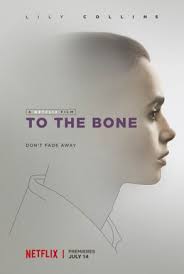
TO THE BONE
US, 2017, 107 minutes, Colour.
Lily Collins, Keanu Reeves, Alex Sharp, Carrie Preston, Liana Liberato, Lily Taylor.
Directed by Marti Noxon.
A serious film about young women and eating disorders. Publicity notes that the writer-director, Marti Noxon, as well is the star, Lily Collins, both experienced these disorders in their early lives. The film has been careful not to provoke audiences, move towards relapses, but trying to indicate aspects for medical and psychological help.
Lily Collins portrays Ellen, a young woman, poor self-image despite an attractive appearance, artistic talents. Her mother has abandoned her and has moved in with a partner. Her father has remarried but is always very busy (not appearing in the film, avoiding the therapy sessions). His second wife has a teenage daughter – and the two young women are strong friends.
Ellen has gone into community therapy but has responded badly. She has been affected by the suicide of a young woman who was influenced by one of her works of art, the dead girl’s parents sending Ellen pictures. Ellen seriously blames herself for the death.
Her stepmother, concerned, always talking, anxious, arranges for Ellen to be interviewed by a renowned specialist – an interesting role, played sympathetically and strongly by Keanu Reeves. Most of the action then takes place within the community, the different young women with their problems and interactions, the regime of the community, therapy sessions, mealtimes which they must attend even if they don’t eat, the various ploys that the young women use to avoid eating or for bringing up their food. There is a young British man, a former ballet dancer now with an injured knee, also part of the community, tending to take charge, befriending Ellen, some great bonding, some clashes.
The family gathers for a for a meeting, the father not turning up, and the doctor noting that except for the young girl, everyone else’s comments tend to be self-focused. The film builds up to a climax, the interactions between the dancer and Ellen, one of the young women being pregnant and having a miscarriage – perhaps influenced by reaction to eating and bringing up the food.
The ending is something of rock bottom, literally in the mountains, for Ellen, but now with her new personal name, Eli, images of herself dying, her actual mother offering to feed her with a bottle just like a child, the interaction of images and reality and her returning for therapy.
- The title, expectations, the focus on eating disorders, the consequences for those suffering from the disorders, the repercussions for themselves, their families, ways to confront the disorder, individually, in community, family therapy?
- The affluent background of the family, homes, the mother and her partner in Arizona, their ranch? The centres for therapy? The interiors, rooms? The musical score?
- Ellen’s story, her mother leaving, the lesbian relationship, Ellen not able to stay with her? Her father marrying again, the influence of her stepmother, anxious and busy, Ellen’s friendship with Kelly, stepsister but sisters? The father and his absence, even from therapy sessions?
- Ellen her age, her talent, art, the story of the suicide, the upset parents sending pictures to Helen, her blaming herself?
- The attempts at therapy, communal living, regimes, Ellen’s reaction?
- The reputation of Dr Beckham, the initial encounter, his straight words, Ellen and her reaction, offhand, returning, the decision to go into the community? The low expectations?
- The community, the encounter with Luke, British, ballet dancer, injured knee, eating disorder? Her ship is showing her round? His story, friendship? The other members of the group, the girl with the, the bright young woman but hiding her bag under her bed, the pregnant young woman, the members of the staff, Lobo and her management, the woman running the therapy sessions?
- The mealtimes, Ellen and her reactions, the devices to avoid eating, obligatory presence, but not necessarily eating? The conversations, personal stories? Ellen, interactions with the others, with Luke, the bonding, the merit system and his taking her to the meal, his taunting her with her favourite food, the drinking at the restaurant? The tour, the kiss, her reaction, considering him gay? Building of the friendship?
- The issue of her name, her change of name to Eli?
- Family therapy session, her mother and her explanations, her partner, the strong stances? The hostility with the stepmother? Kelly and her offer of sympathy? The absent father?
- The interviews with Dr Beckham, his understanding, his challenge, straight talking?
- The pregnant woman, the miscarriage, Luke and Ellen finding her after their dispute, the effect on Eli, her walking out, Luke and his appeal?
- Going to Arizona, with her mother and partner, the tent, her mother and the issue of feeding her, the bottle, a symbol of maternal reconciliation?
- Going out on the rocks, desperate, her imagination, seeing herself as dead, imagining Luke helping her? Her decision? The return, the welcome? A hopeful ending – with Eli taking responsibility for her life, some ambitions and achievement?
New book of Scripture and Prayer Reflections, 10 Minutes More, Peter Malone MSC
New book of Scripture and Prayer Reflections, 10 Minutes More, Peter Malone MSC
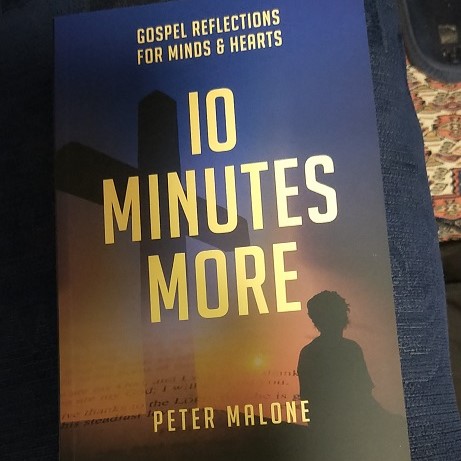
10 Minutes More is the sequel to the author’s previous book 10 Minutes. As in the first volume, we are again invited to take 10 minutes to read a chapter in the book. The chapter will introduce a Bible story that will lead to another 10 minutes of reflection, prayer and sharing.
It is an approach that reflects the storytelling that was at the heart of the life and ministry of Jesus himself who not only told stories but whose entire life, from birth to death, became story. His stories, his parables, all display how he shares every aspect of life with us – joys, sorrows, pain, suffering.
10 Minutes More belongs within that Jesus tradition. By reflecting – even for a few minutes – on a gospel story, we connect its profound message with our own lives. We allow its teaching to help us make sense and purpose of our own life journeys in the ancient witness of the gospel.
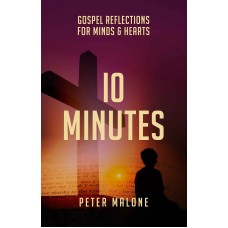
10 Minutes More is another delightful book from the pen of Fr Peter Malone MSC. It continues in the style of the earlier book, 10 Minutes. These small books are created for short and focused reflections on Jesus. The simple style belies a lifetime of scholarship and reflection on the Gospel accounts of Jesus; and Peter offers accessible insights into our favourite stories and connections to the great hero narratives of the Hebrew scriptures.
– Alison McKenzie, Secretary General of the Laity of the Chevalier Family.
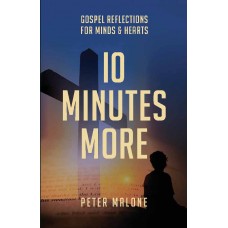
Peter Malone’s previous book 10 Minutes, Gospel Reflections for Minds and Hearts is a very valuable book for promoting discussion on many biblical events. Now he has written a new series of these Gospel reflections, 10 Minutes More. I can strongly recommend it for both private reading and group discussion.
– Paul Castley MSC, author, A Time for Hope (Coventry Press)
Conclave
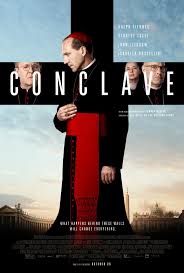
CONCLAVE
UK, 2024, 120 minutes, Colour.
Ralph Fiennes, Stanley Tucci, John Lithgow, Lucian Msamati, Jacek Koman, Brian F.O'Byrne, Isabella Rossellini, Valerio Silva.
Directed by Edward Berger.
Many audiences will be eager to see Conclave because they have read Robert Harris’ exciting novel, the story of the death of the Pope, the gathering the Cardinals, the details required by Vatican regulations, the need for security, the holding of the conclave and the election of a new Pope.
The Catholic audience, especially those with a familiarity with the workings of the Vatican, the nature of the hierarchy, the different perspectives, even of popes during the last half century, a lot to interest, to enjoy, and a provocation especially about stances for going back to consolidate past traditions or an openness to contemporary issues in the wider world and their repercussions for the church.
For non-Catholic audiences, they will enjoy the delineation of characters and their variety, the elaboration of issues, machinations, religious motivations, personal and ecclesiastical challenges. But, it would be by way of observation, the same way non-British audiences may be intrigued by a drama about the intricacies and politics, say, of Britain’s Brexit campaign.
For audiences critical/sceptical about the church, it may seem rather esoteric or politically and ecclesiastically pompous.
But, back to the Catholic perspective. The central character is Cardinal Thomas Lawrence, played in a wonderful performance by Ralph Fiennes, always intense, but, even when not speaking, the audience very conscious of what concerns him, what he is thinking, what is making demands on him. He has wanted to resign as Dean of the Cardinals but the late Pope has refused. Which means that he has to organise the conclave.
So, there we are in the Sistine Chapel, workers in to protect security, the organisation of desks for the Cardinals, the sisters brought in to cook and cater for the conclave, the arrival of the Cardinals, from many different cultures around the world, some pomp and circumstance, some religious earnestness.
To dramatise the different points of view, there is the open-minded Cardinal Bellini, Stanley Tucci, the hoped-for candidate from the “progressive/liberal” attendees. On the other hand, there is the almost crusading, very Italianate Cardinal Tedesco, Pietro Castillitto, with an Italy-first mentality, opposed to contemporary changes, and militantly hostile to refugees making their way to Europe. And there are some complications with an African Cardinal from Nigeria, raising issues of sexuality in the church today, and some realities of sexual abuse. And, on the worldly side, the money-political perspective, there is an American Cardinal played by John Lithgow.
There is an unexpectedly Mexican-born missionary in Congo and in Kabul, who arrives, claiming as having been made a cardinal “in pectore”. Isabella Rossellini plays a very forthright nun who has no hesitation in speaking directly to the Cardinals.
Robert Harris’ novels read very well, compelling, covering a wide range of issues from ancient Rome to 20th century fascist and communist states, to contemporary issues. Which means that he has an interesting story to tell, the filmmakers generally checking to give some kind of authenticity to the storytelling, and an ending which will raise many eyebrows and leave many audiences suddenly shocked and, perhaps, struggling to work out what they think, and some questions for the future church.
- The popularity of Robert Harris’s novel? A papacy story, 21st-century?
- The title, the death of the Pope, the rituals, the gathering the Cardinals, the conclave, the voting, behind-the-scenes? Audience knowledge of conclaves?
- The Catholic atmosphere, Vatican, the Curia, the Cardinals, International, political stances, religious stances, the enclosure, the discussions, the voting, the black smoke, the white smoke?
- The situation of the church, the dead pope, criticisms of his being progressive, his keeping tabs on the Cardinals, his hidden report, keeping Cardinal Lawrence as Dean, his dismissal of Cardinal Tremblay? Lawrence going in to break the seal, finding the document? The ceiling of the room, the removal of the body, the smashing of the ring?
- Fiennes as Cardinal Lawrence, the complete focus of the film on him? The performance, the intensity, communicating the interior questions and doubts? His background, wanting to resign, go to a monastery? His having to organise the conclave? His reliance on O’Malley, Logistics, searching information, interviewing personnel? Mexican priest from Afghanistan? Tremblay and his background? The importance of confidentiality?
- The background of this logistics, the Sistine Chapel, preparation, security, the accommodation, travel by bus, the rooms, the meals together, the sisters in the kitchen? Audiences appreciating such detail?
- The key Cardinals? The Nellie, friendship with Lawrence, progressive, his ideas, his declarations, ambitions or not? To disco, irritating, bombastic, conservative, scheming, his following, his outburst after the bomb blasts, his intolerance, racist perspectives on the African Cardinal? Tremblay, American, the Curia, his manoeuvres, financial benefits for followers, arranging the nun from Africa to discredit the African Cardinal? The Cardinal from Milan, the discussions, his concerns? The range of other Cardinals, International, friendships, groups, smoking…?
- The arrival of the man from Afghanistan, Mexican, his previous mission experience, created a Cardinal, “in pectore”, his arrival, dishevelled, the interview was Lawrence, the discussions about the authenticity, suspicions, acceptance, his background? Presence of the conclave? Lawrence leading the applause from the Cardinals?
- The assemblies, the voting, the rituals, the county the numbers, the variety over the days, the African Cardinal, the incident with the nun in the dining room, his walking out, Lawrence and the discussions with Sister Agnes, with the nun, confession, learning the truth, the confrontation with a Cardinal, his confession, 30 years earlier, a lapse, his hopes to be Pope, the votes for him, his having to withdraw, sitting alone?
- The confrontations with Tremblay, the information from the Monsignor who served the Pope, his drinking, last-minute talking to Laurence? Lawrence conferring with the Nellie? Confronting Tremblay, his immediate 40 reaction? Lawrence going into the patron, finding the document, the public exposure, the humiliation of Tremblay?
- Sister Agnes, her presence, the nuns, forthright, stern, protecting the nun from Africa, standing up to Laurence, sensing the person in the Pope’s room? Her speech, a woman’s voice, the women observing, the strong stand?
- The changes in fortune, the discussions, the Nellie and his challenge to Laurence, their friendship, his later asking for forgiveness?
- The Cardinal from Afghanistan, his visit to Laurence, continually voting for him? Lawrence then voting for himself?
- The tensions in the room, to disco and his behaviour and look? The African Cardinal? Tremblay humiliated?
- The bomb blast, terrorists, Tedesco’s outburst, the speech by the Mexican, his appeal for unity?
- The final vote, the election of the Mexican, his acceptance, the name of Innocent? O’Malley, the information about Switzerland, the Institute? Lawrence talking to the Mexican, the surprise of his situation, the transgender issue? His decision?
- The ending, the future of the church, Pope Innocent, and the revelation? Lawrence looking at the window, the nuns coming out of the building, the end of the film and audiences left to ponder?
MSC Australian Province History, new book available
MSC Australian Province History, new book available
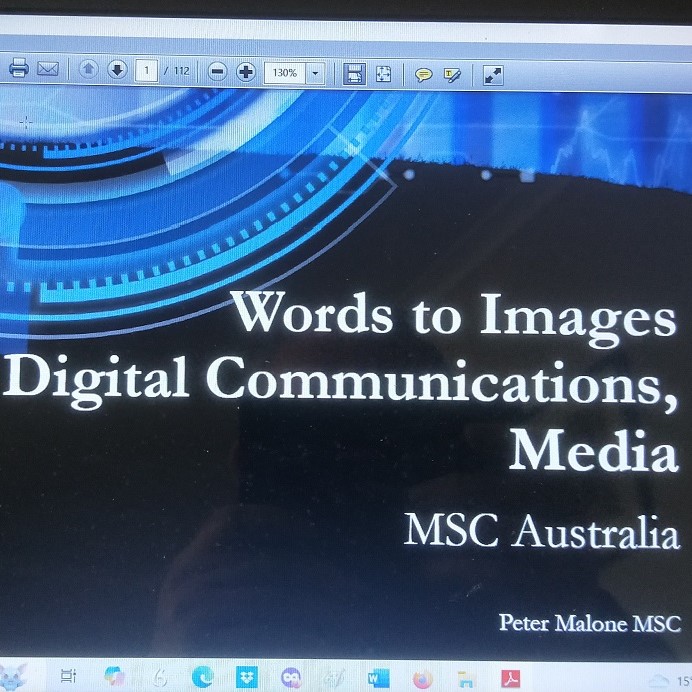
Word to Images to Digital Communications, Media. MSC Australia is the title of this book, an e-book.
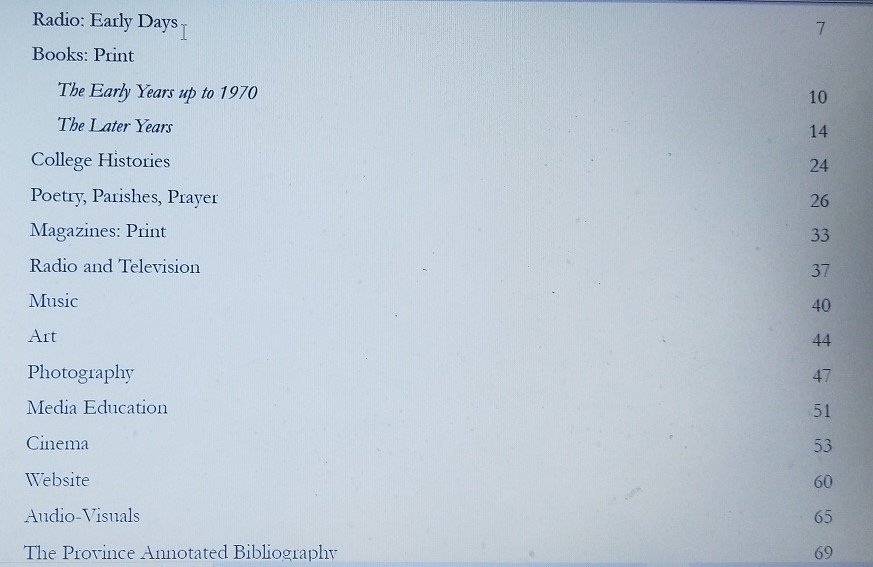
It will be uploaded on the Province website next year. But, if you would like to receive a copy in PDF for yourself or for anyone interested, contact the author by email: This email address is being protected from spambots. You need JavaScript enabled to view it.
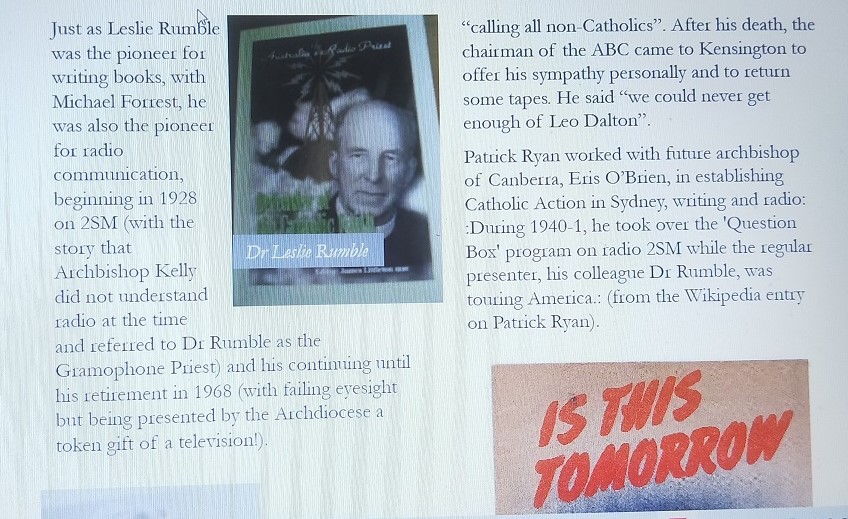
Writers
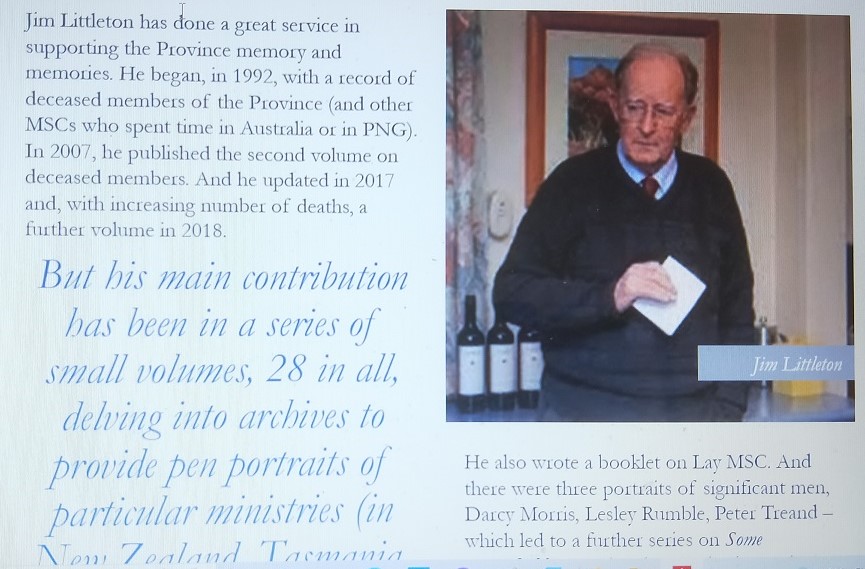
The book is illustrated with many photos, book covers, media outreach.
Music
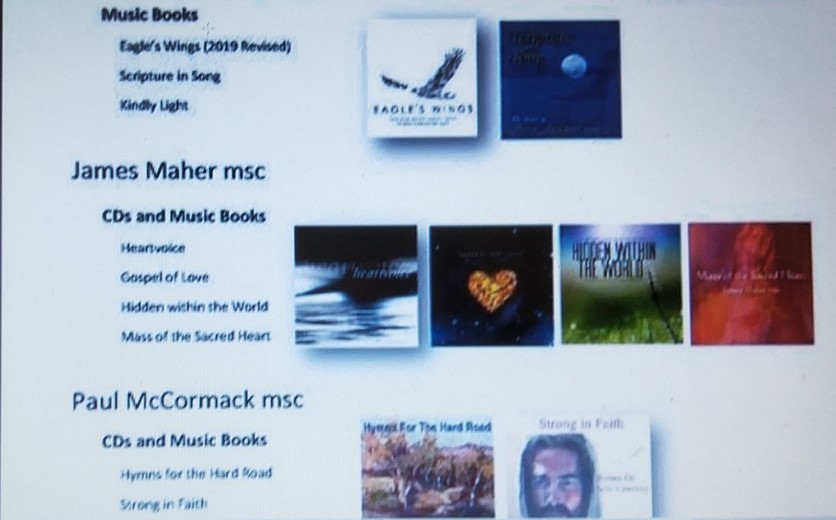
e-books
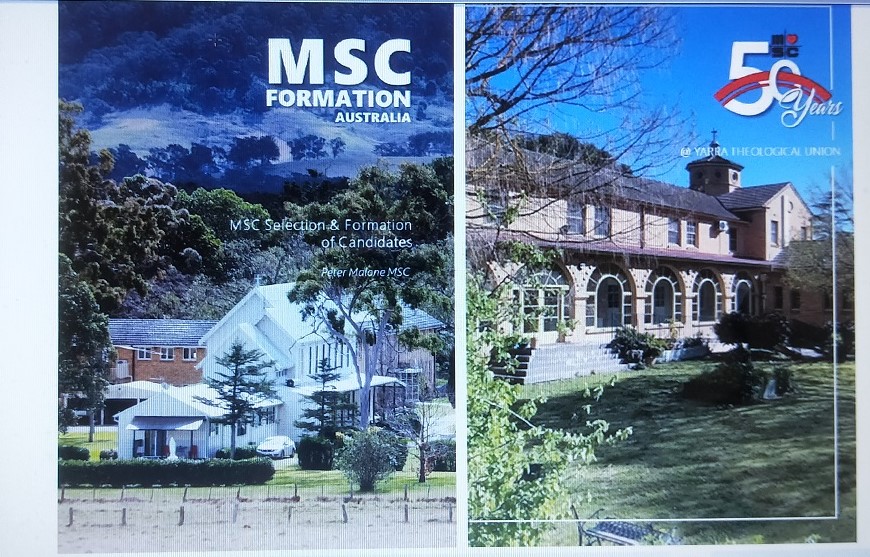
Vietnam
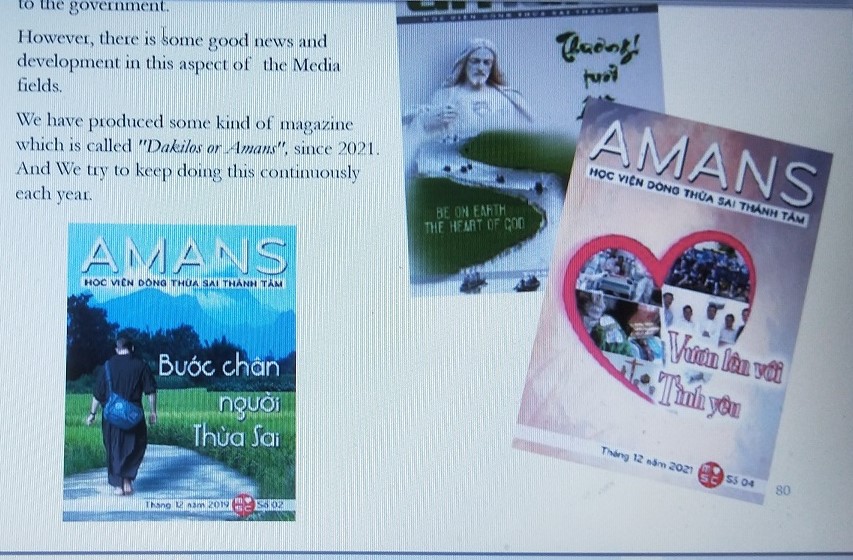
Annals
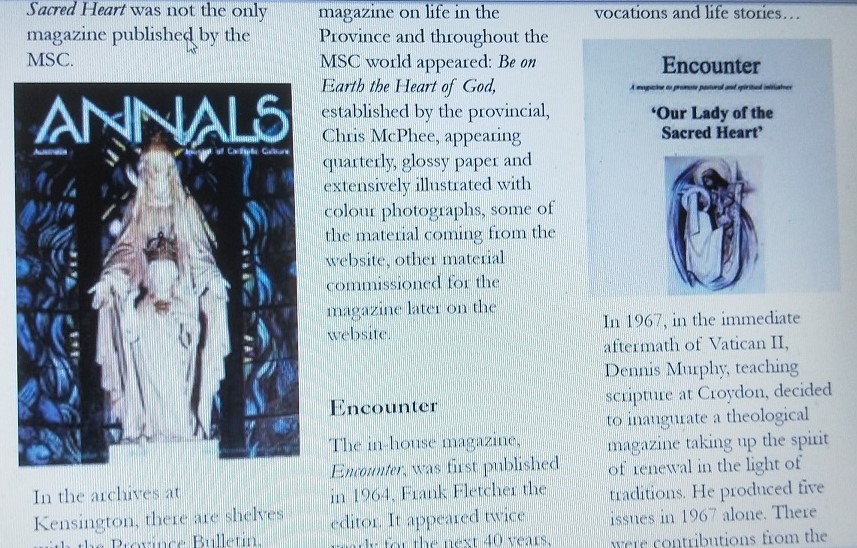
There are several appendices with article on media and communications and MSC Constitutions and Statutes, the history of media, by Tony Arthur and Peter Malone, an overview of Annals by Paul Stenhouse, on Annals editors by J. F. McMahon. Finally, a list of our media and the names of those involved in each area.
And as indicated above, if you or anyone would like a PDF copy, contact: This email address is being protected from spambots. You need JavaScript enabled to view it.
Current News… Succession.
Current News… Succession.
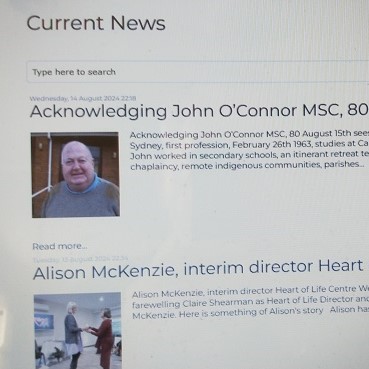
Succession. A word now well-known through the popular television series.
But, succession in the context of our website?
Instead of third person, I am writing now in the first person as Peter Malone, personalising these reflections, with some photo-realism of where Current News is posted!!
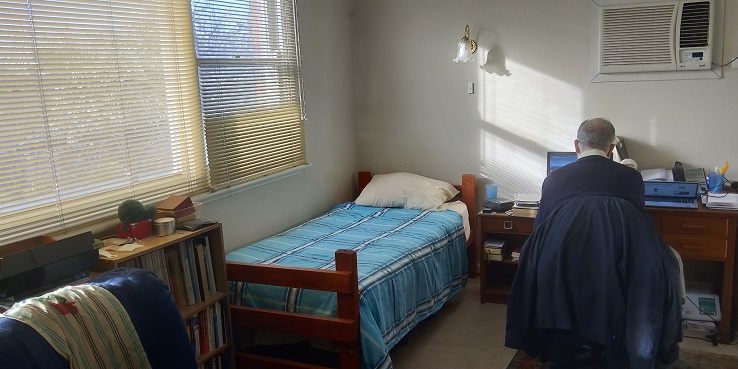
August 17th is the 14th anniversary of my starting work on Current News on this site, shrewdly led on by the then provincial, Tim Brennan.
This means that I have posted, in round numbers, 300 stories each year, which tells me that would mean a total of at least 4200 items. I had not thought of it until recently when somebody used the word “discipline” about the regularity and constancy. This made me realise that I have posted six items a week, wherever I was – but mainly at home at my computer, at the desk or, as now, in my armchair, 10 PM each night, listening to Philip Adams on Late Night Live (but he has now retired).
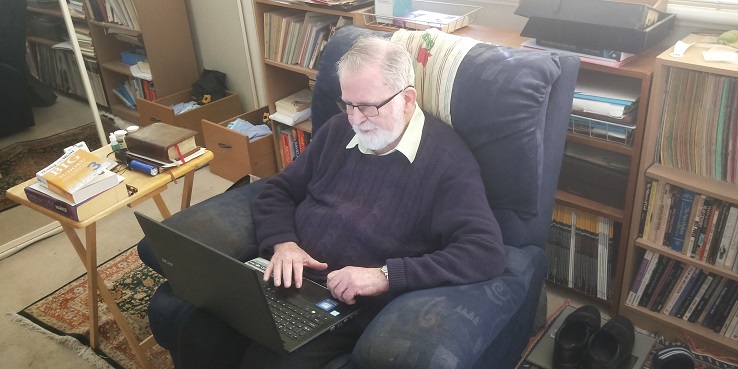
I noticed on the website last week the news that I had turned 85. And, so, the thought about stopping. Hence, succession.
I will continue until the end of this year. I am happy to say that there is a good plan in the works for continuing the Current News. Also in the works is a re-vamping and updating of the site. So, as you do, “Watch this space”.
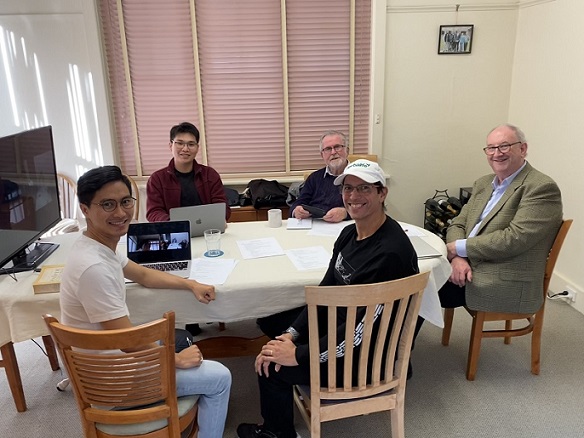
Planning for the future
I look back and realise that all the posts are still there on the site, something of a diary/archive of life in the Province and beyond, items that are still available through the search engine.
And I have enjoyed something like investigative journalism, an eye and an ear for stories, leads, connections, googling for stories and photos, planning ahead, now and again having to improvise, keeping alert.
Because of the work on the website, another task was writing the Analecta entries on each year of the Province, history and publications. I now have a successor. His first entry appears tomorrow…
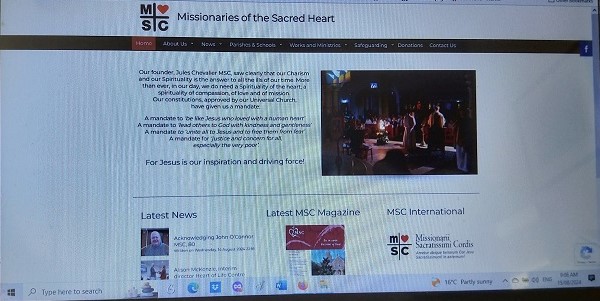
Acknowledging Peter Malone MSC, 85.
Acknowledging Peter Malone MSC, 85.
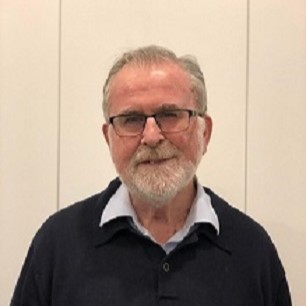
Peter Malone, from Sydney, educated at OLSH Bowral, and five years at Chevalier College. First profession on 26 February 1958, studies at Sacred Heart Monastery, Croydon, Sacred Heart Monastery, Canberra. His theology studies were at the Gregorian University in Rome where he was ordained in the student house chapel, April 3 1965.
He taught at Daramalan College, Canberra, moving to teach Old Testament and theology at the Canberra monastery, then pre-Novitiate director at Croydon monastery for ten years, the 1970s, teaching at the newly-established Yarra Theological Union as well as at the National Pastoral Institute and the Heart of Life Centre where he is still involved.
Frequent question: Twins? Frequent answer: Actually not!
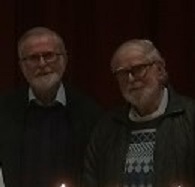
This photo from two weeks ago, July 25th, indicates the lack of resemblance.
During the 1990s, he headed the OCIC (International Catholic Organisation for Cinema) in Australia and the Pacific and in 1998 was elected the world President. When OCIC merged with the international television organisation, Unda, in 2001, he became the first president of SIGNIS (World Catholic Association for Communication). He has been reviewing films since 1968 and has published some books on cinema and religion. He was also the editor of the MSC theology periodical, Compass Theology Review for 27 years, 1972-1998. He edits this site.
He lives in the MSC Melbourne community, his brother, Philip a member, at Kew.
MSC Australia books, books about MSC Australia
MSC Australia books, books about MSC Australia
Peter Malone writes: this website post has been with with my “working with Michael Fallon on our MSC Books Archive” hat on.
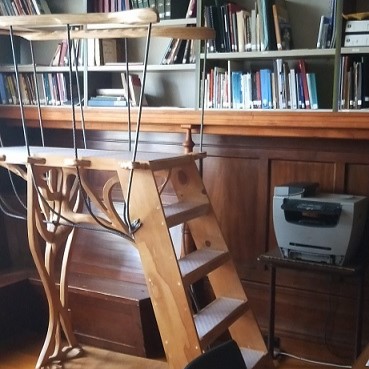
Have you wondered about how many Australian MSC have written books?
The quick answer is: more than a lot!
The news for this website post is that there is now An Annotated Bibliography of the Province. It will be an ebook on the Province website. This has taken some years to complete, interrupted for several years by Covid, and a realisation that many books were in the library at Kensington, quite a number upstairs on the second floor in the archives room, and so many all around the province.
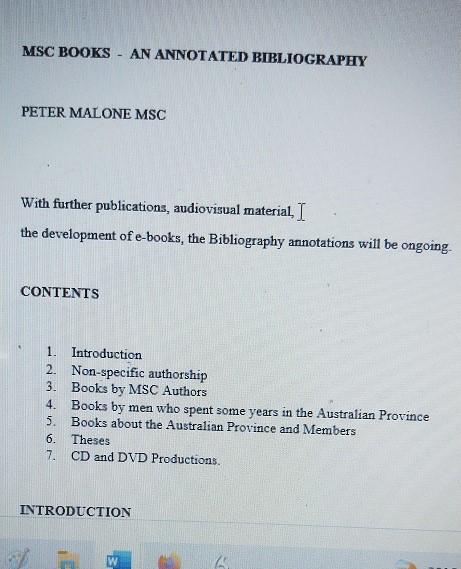
After Paul Stenhouse’s death, Michael Fallon had the hefty task of organising that room, Paul’s books, coordinating the MSC books from the various sources, cataloguing them, arranging particular sections of Paul’s room so that it could become the book archive.
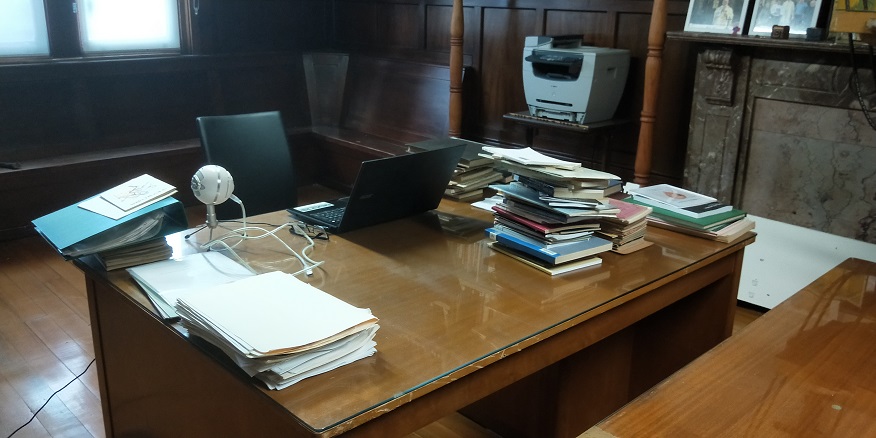
The Annotated Bibliography has, in alphabetical order, each Australian MSC author, the publishing details of each of their books, sometimes a short annotation, at other times longer, especially utilising the information on back covers. The books we have now are in alphabetical order occupying the wall space of half of the archive room. And, within this alphabetical order, the books written by former confreres, and these are also annotated.
In a corner across the room, is an increasing number of books about members of the congregation, different ministries, aspects of MSC life.
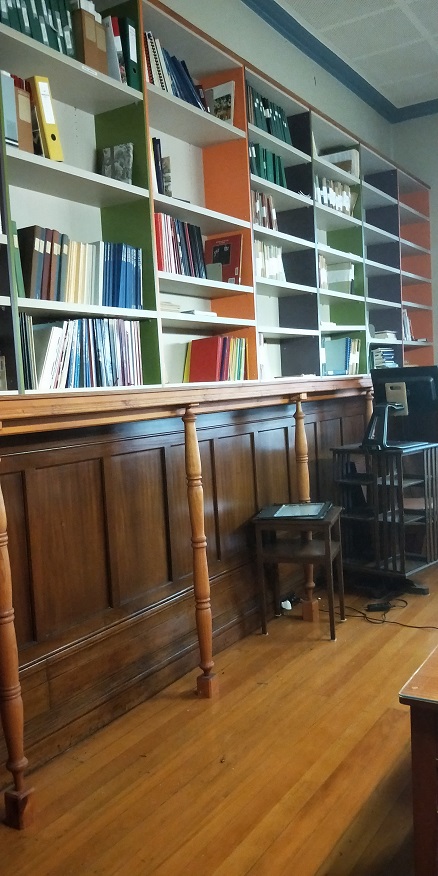
A request. We are eager to have copies of any books about MSC in Australia, individuals, ministry (an example is a thesis from Charles Sturt University, 2008, on MSC NT missions, with very full chapters on John Leary, Ted Merritt, Gerry Burke, more information than we have previously come across before.)
The Annotated Bibliography will find its home on the provincial website, in the section on e-books.
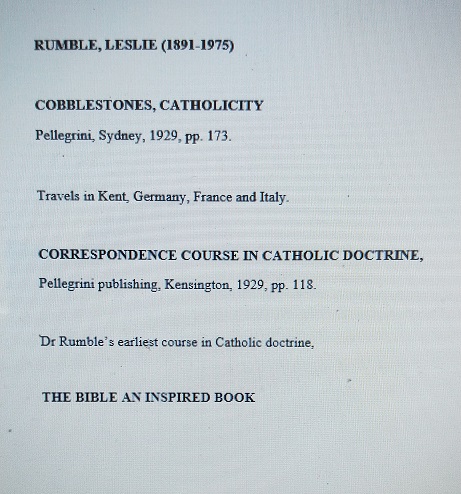
The person who compiled the Annotated Bibliography is website editor, Peter Malone MSC – persuaded to put in this photo of him as he stood on the library carriage which moves, rather heavily in the pushing, across the room, precarious to descend (rather easier to go up) and requires constant attention to balance! It is hoped that the bibliography maintains that good balance.
